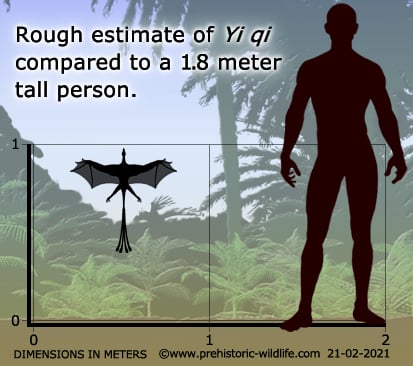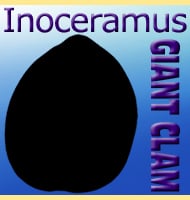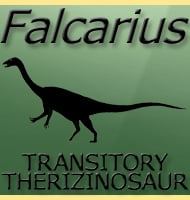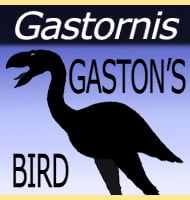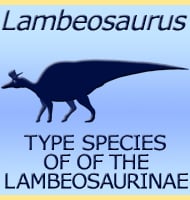In Depth
Yi is certainly one of the more bizarre dinosaurs that were named in 2015. In fact this is reflected in the full type species name of Yi qi which translates to English as ‘strange wing’. This is a reference to how the hands of Yi not only had elongated fingers, but how there also seems to have been a membrane of skin between them, forming a wing similar in appearance to what we see in bats today.
The membrane is known to have connected the fingers and the styliform bone (a newly evolved bone not seen in other theropod dinosaurs) of the hand area, but it is still not yet known with certainty if the membrane reached all the way to the main torso. Also, the position of the styliform bone in flight is not known for certain, and these two unknown factors have led the original describers to postulate three main theories about how the wing was formed. First is that if the membrane did not connect to the torso and terminated at the styliform bone, then Yi may have just had pads that opened up like those of gliding tree frogs. If the membrane did connect to the torso though, then it is the shape of the wing that is unknown. If the styliform bone was held out to the side then the wing membrane would have been long but thin. If the styliform bone faced backwards however then the wings would have been shorter but broader. If the membrane reached the torso, and if Yi lived in forested areas which seem to have covered extensive parts of China in the Jurassic, then a shorter, broader wing may perhaps be more likely as this would reduce the chance and frequency of the wings clipping branches and trunks as Yi flew through such an environment.
The exact method of flight for Yi is also unknown for certain but we can also speculate as to what is more probable for this dinosaur. Yi probably could not rely upon powered flapping of the wings even though Yi probably had the range of motion necessary. This is because the sternum (breast bone) of Yi did not have a deep keel, meaning that there was no enlarged area for the attachment of enlarged pectoral muscles like we can see in birds. With only relatively small pectoral muscles similar to other small theropod dinosaurs, Yi would have only been capable of flapping its arms for a short while before becoming too tired to flap them anymore, making a reliance upon powered flapping flight for long distances impossible. This might make gliding more possible, but again, Yi does not seem to be perfectly adapted to gliding either as it would have had a different wing form to other gliding animals that we know today. This does not discount the idea entirely however, this dinosaur may have simply done something different to what we can observe today. It may be that Yi actually used a hybrid form of gliding, where travel from a launch point to landing site was primarily done by gliding, but short bursts of flapping were undertaken to launch, steer and then perhaps slow down before finally landing.
Yi is yet another genus that hints that flight evolved several times in the dinosaurs, and not always along the same route. However, while Yi can be seen as an example of convergent (similar but not direct) evolution when compared to mammalian bats, Yi also likely represents and evolutionary dead end. This is because at the time of writing Yi and other scansoriopterygid dinosaurs are only known from a relatively narrow scope of time in China. When Yi was named the only other two members of this group are the type genus Scansoriopteryx and Epidexipteryx, and both are noted for having enlarged fingers like Yi, though no membranes were reported when they were first described. However one palaeontologist named Andrea Cau did speculate about the presence of skin membranes on these two dinosaurs in 2008 and 2012, years before Yi would be described. This begs the question, did these two genera also have skin membranes, or is Yi a further offshoot from these two dinosaurs?
The skull of Yi is reconstructed as being very short and blunt, while the lower jaw curves downwards. The teeth in the upper and lower jaws are angled to face forwards, the lower jaw more so than the upper. Altogether this loosely resembles the form of the anurognathid pterosaurs some of which such as Dendrorhynchoides and Jeholopterus were flying around Chinese forests during similar times as Yi. This may indicate that Yi was an insectivore, hunting for flying insects in the Jurassic forests of China.
Thanks to modern electron microscope analysis, melanosomes (pigment bearing organelles) have been located and studied on the Yi holotype fossils, meaning that we actually have an idea as to what colour this dinosaur was. For the most part Yi seems to have been black in colour (eumelanosomes), while the head, skin membranes seem to have been yellow-brown (phaeomelanosomes). Because of the family connection to Epidexipteryx, Yi is also thought to have sported a few elongated tail feathers.
As of 2015, Yi is the shortest dinosaur name recorded in science, replacing the previous record holder Mei which was named in 2004. The total name Yi qi is also the shortest possible name under zoological nomenclature given that the minimum is four letters long. This means that while one day there may be other dinosaurs with names as short as Yi qi, no other dinosaur will ever attain a name shorter than this.
Further Reading
- A bizarre Jurassic maniraptoran theropod with preserved evidence of membranous wings. - Nature. - X. Xu, X. Zheng, C. Sullivan, X. Wang, L. Xing, Y. Wang, X. Zhang, J. K. o’Connor, F. Zhang & Y. Pan - 2015.
